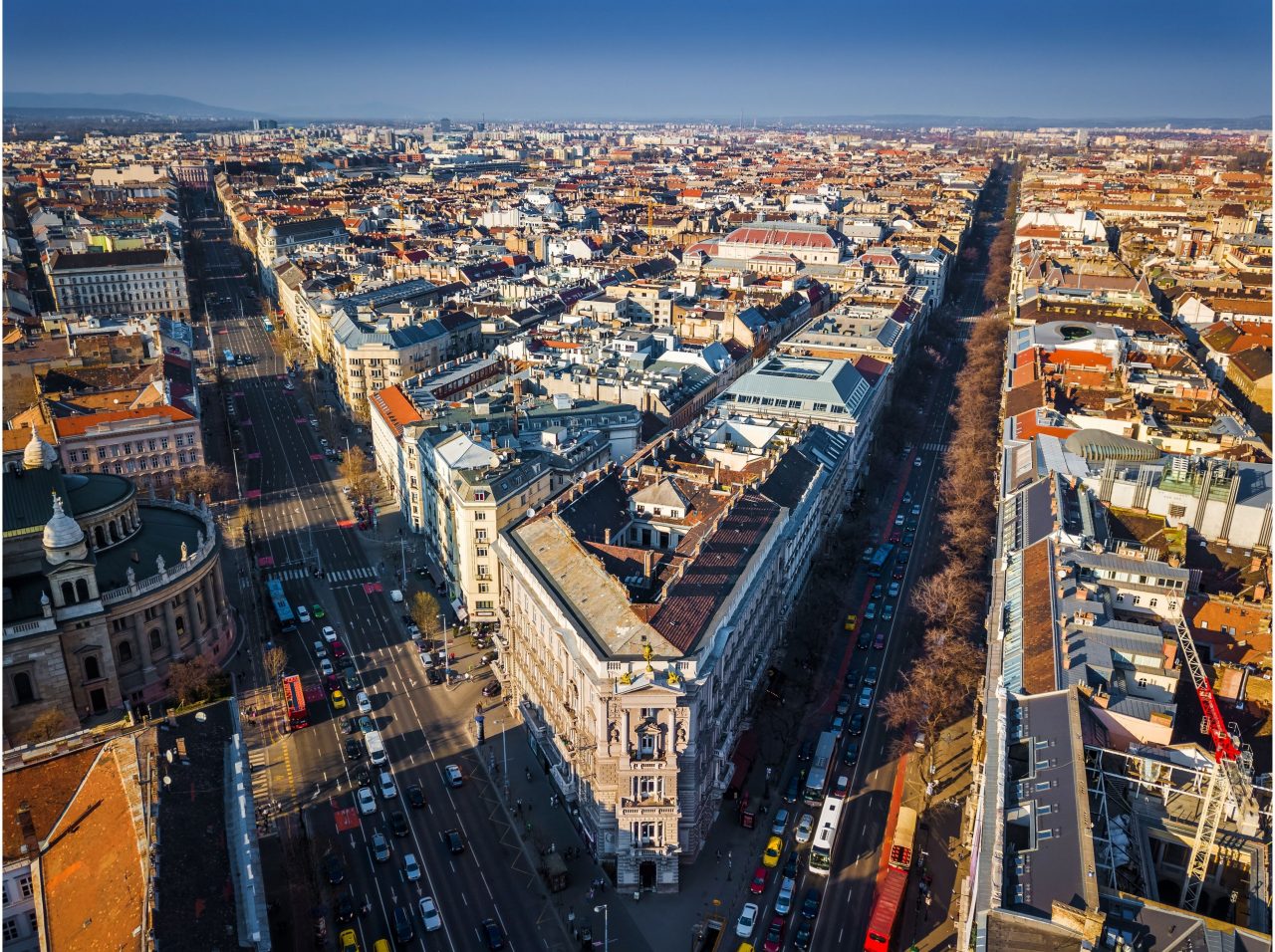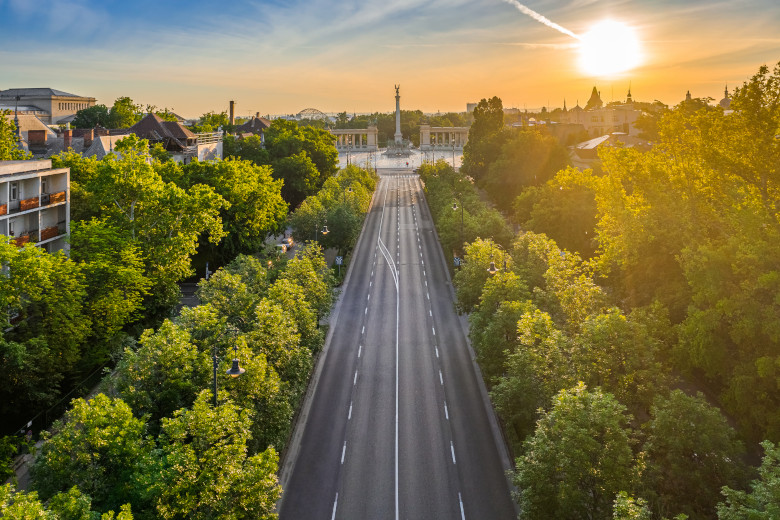Budapest, as most of the capitals tend to be, is the biggest city in Hungary and has a history going way back. Besides many of the historical places, out of which some are hundreds of years old.
Evergreen Dental is located in the centre of Budapest, on the first floor of a prestigious building at 45 Andrássy út. The beautiful Art Nouveau building is a UNESCO World Heritage Site.
It was formerly home to the legendary Japanese Café, which enjoyed its heyday between the two world wars as one of the centres of the era’s vibrant intellectual life. Notable artists such as Attila József, Jenő Rejtő and Lajos Kassák used to visit the café every day. Since the 1960s, the site of the former café has been home to the Writers’ Shop, which continues to serve a cultural mission to this day. The building was renovated in 2016.

But let us take a look at Andrássy Avenue!
First and foremost, it must be mentioned that Andrássy Avenue is part of the Unesco World Heritage since 2002, so one should have an even better reason why to visit it. Most of the buildings on the avenue were built in the 19th century and were housing important associations and cafes, or were homes to high society members from that era.

At one end it connects with the Bajcsy-Zsilinszky Avenue, another important one in the city, closed down with Deák Ferenc Square, the main cluster point for most of the metros and also the center of the Pest side.
At the other end of Andrássy can be found another important site, namely the Heroes’ Square, with the main park behind it. Heroes’ Square is also renowned for having the Art Gallery on one side and the Museum of Fine Arts and also the famous Széchenyi Thermal Bath behind it.

Focusing back on Andrássy Avenue, we can come across one of the most treasured historical elements in Budapest, the Millenial Underground, called simply M1 by the locals. It was opened in 1896 and was the third underground public transport in the world, the second in Europe, but the first on the continent. When it opened its gates to the public, the old steam engine carts were changed to a tramway, which is still the technology used up to date, instead of metropolitan style ones.
Bringing the focus a little closer to our clinic, we are located 2 minutes from the biggest intersection on Andrássy Avenue, the Oktogon. One could guess that the name came from its shape and though standing on the side of the road it might not be immediately obvious, but taking a closer look on a map, it can be seen that the buildings in that spot are angled in an octogonal shape, hence the name. Orienting our attention to the building of the clinic, it is not the most decorated one in the area, but that is thanks to its neo-renaissance style with a hint of eclectic. It was finished in 1878 and not long after, in 1894, the cafe opened its doors to the public, in the corner section of the building. The cafe had to close during the World Wars, but always reopened afterwards. Due to its original, oriental and asian style decoration, it was named Japan. In the beginning, it was the meeting point for some of the world renowned painters, like Rippl/Rónay and Csontváry-K. Tivadar, Pál Merse Szinyei, having a pause during the first WW, then becoming the eden of the writers and poets like Jenő Rejtő, Attila József, Sándor Bródy, Lajos Kassák and many more for years to come.

The above mentioned atmosphere of Andrássy Avenue has mostly disappeared into history, but a small part of it will always be there until the buildings are still standing. Thanks to it being part of the World Heritage, it will be preserved for as long as possible, thus giving one the chance for a slight time travel in Budapest.
